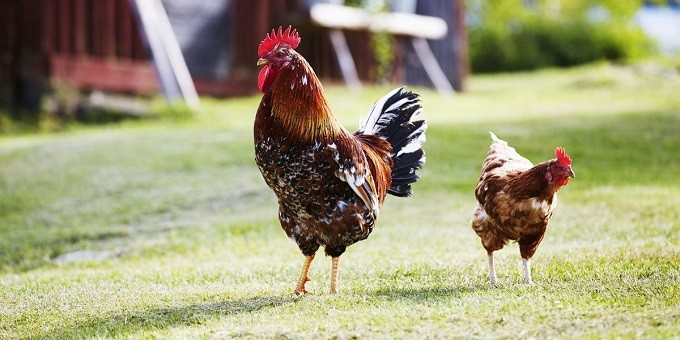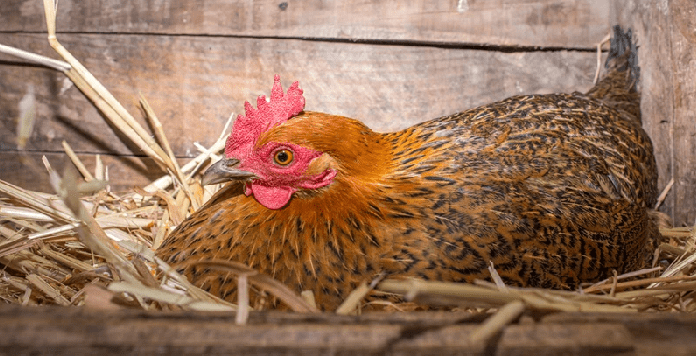Different reasons resort people to start poultry farming. Mostly, people rear chicken for eggs and meat. To others, chickens are domesticated as pets in their backyards. Chicken are adorable pets that can meddle with people freely. Whichever the reason you domesticate chicken, you need to have more ideas about them. Most people have always wanted to have an idea the age chicken starts to lay eggs. Suppose you are wondering when your farm fowls will begin laying. Be perused along to get familiar with the signs showing that eggs are in transit. We’ll discuss the average age that farm fowls start to lay, how breed assumes a job, and a couple of indications that eggs are in transit.
Each chicken is unique, and there is nothing you can do to surge them to grow up; understand and appreciate the time well. Do not rush them at all.

The Age Those Hens Begin Laying
Youthful female farm fowls start laying eggs or “come into lay” around a half-year-old enough. A few farm fowls may begin laying eggs ahead of schedule as 16 to 18 weeks old, while others may take as much as 28 to 32 weeks (more like eight months old). We have had some extra-early overachievers alongside many slowpokes throughout the long term, but found that around 20 to 22 weeks was the most widely recognized age for our chickens to begin laying.
Four youthful pullet Hens are perching on a wooden sawhorse roost. Everyone is distinctive in shading, one is dark and copper, one is splendid orange to tan, another is high contrast, and the last one is light earthy colored with some dark. There brushes and fights are almost nonexistent at their young age.
Laying Depends On The Chicken Types.

Regardless of age, your farm fowls’ specific variety will impact when eggs begin to show up. Certain types of farm fowls start laying eggs sooner than others, and each breed has its average age run for egg improvement.
Farm fowls have been reproduced with the end goal of egg creation. They begin laying eggs sooner (as on time as 17 or 18 weeks old), including Leghorns, Golden Comets, Sex Links, Rhode Island Reds, and Australorps. Then again, more massive varieties like Wyandotte, Orrington’s, and Barred Rocks are known to take somewhat more. Our Easter Egger women are, in each time, last to add their vivid eggs to the bin, which is a known feature for their variety.
Impact Cf Changes In Weather Conditions On The Laying
Most of the youthful chickens will begin laying the preceding year that you have them. However, on the off chance that you happen to get your chicks later in the year (summer or fall) and come into development during hazier, colder long periods of fall or winter, they may hold up until the accompanying spring to begin laying! Diminished sunshine hours in the wintertime, for the most part, flags develop hens to take a body break from laying, moderating their vitality and supplements to prepare for the virus winter ahead. You’ll also see the chicken’s brushes and wattles become littler and pale once more throughout a winter discontinuance of lying, swinging with their hormones. It isn’t extraordinary for youthful farm fowls to keep laying directly through the winter! They’ll enjoy a reprieve the accompanying winter after that.
Are you curious about studying? Thinking about chickens in a chilly climate? Is that including tips for winterizing their coop? Look at this article about winter farm fowl consideration. If it’s not too much trouble, note that we don’t recommend lighting the enclosure to “power” chickens to keep laying eggs through winter.
How To Note The Hens Are Ready To Lay?

1) Enlarged Reddening Combs And Wattles
As youthful farm fowl develops, their brushes, as well as wattles, become progressively massive. If this is the scenario (under about two months old), it could indicate that the chicken is youthful! Then again, young female farm fowls build up their brushes and wattles all the more gradually. As her hormones move and prepare to begin laying, her brushes, wattles, and face will change from light pink to more brilliant red in shading. They will likewise grow and expand. Her brush and wattle are pale in shading and little. She is remaining on a seat with a chicken coop out of sight.
2) Start Searching For The Nesting Place.
In the weeks paving the way to the main egg, a youthful hen will typically begin to show more enthusiasm for the settling box territory than any other time in recent memory. She may even start to test it out and sit inside, regardless of whether she isn’t exactly prepared to lay the eggs. One great approach to urge youthful chickens to lay thesaurus in their assigned settling boxes (rather than on the coop floor, or concealing them in the yard!) is to place bogus eggs inside the home box. Chickens will, in general, like laying eggs in a grasp, where different thesauruses are. You could utilize claim to fame counterfeit wood thesaurus, or what we’ve done before, golf balls!
Within a chicken coop, the home box is appeared from above. There are two boxes isolated by a bit of compressed wood in the center; each container has a home cushion and roughage material for settling. There are three eggs in one package: one green, one blue, and one earthy colored. In the other box, there is a dark and tan Easter Egger chicken that presently can’t seem to lay an egg, and it is examining the home boxes, fully expecting the day it will initially apply.
3) They Get Noisy.
The farm fowl produce an “egg melody.” It is entertaining that crowing chickens are prohibited in numerous urban territories since hens can be damn vocal! (I have perused there is something additionally shaking and bothering about the tone of a chicken crow than hen tunes to the vast majority). Our chickens sing and screech for quite a long time when they lay an egg. Along these lines, before your young chickens begin laying eggs, they may turn out to be progressively chatty as well.
4) The Increased Urge For More Food.
As a youthful hen outfit to begin laying eggs, her body will experience various changes all around. The way toward framing and laying eggs takes a ton of vitality! Along these lines, you may see your developing bird start to eat more than expected. Laying hens have unexpected nourishing needs in comparison to more young pullets or chicks.
More youthful flying creatures eat “starter” and “cultivator” takes care of that contain more elevated levels of protein to help their fast development. Layer takes care of having marginally less protein and some additional calcium for legitimate eggshell development. They progressively change your farm fowls to a layer feed when they become 18 weeks old or when their primary egg shows up.
I additionally propose putting out a wellspring of free-decision calcium (for example, squashed shellfish shells or eggshells) either when one hen begins laying, or when you start to see the other indications that eggs are not far off. Look at this article to become familiar with giving essential calcium to laying hens.
5) They Degin Lying Down In Docility.

Of the apparent multitude of signs that a chicken will begin lying soon, crouching conduct is the most telling as I would see it! As you stroll by your young hen or connect a hand to pet her, she may stop, squat, and sprawl her wings out marginally to her sides. We affectionately call this “the agreeable squat.”
Give the young lady a decent pat on the back; however, her crouching conduct’s organic explanation isn’t tied in with nestling with people! She flags that she is prepared and ready to be mounted by a chicken to treat her pending eggs. If there is no chicken around, she’ll submit to her human. Presently, only one out of every odd chicken will squat, the entirety of the young ladies in our herd did and began laying eggs inside possibly 14 days from then.
An orange and dark Easter Egger chicken is crouching and caressed along her back by an outstretched arm. The compliant squat is a sure-fire sign that the chicken will begin laying eggs soon.
A hand is holding a dim earthy colored egg before a Black Copper Marans chicken that just began laying eggs. Her brush and wattle are faint red; she has copper bits blended into her dark plumes along her neck.
When the farm fowls begin laying eggs, their eggs will be altogether littler than what they’ll consistently apply to develop hens. You’ll have containers loaded with delightful huge new eggs directly from your terrace.
Conclusion
The process of laying can be fantastic if at all, your chicken is adequately fed. If this is kept constant, you can be assured of witnessing a tremendous change in your hens’ laying pattern. However, bad health can delay or hinder the laying process. Thus, one should observe her hens daily keenly. Ensure they get all the care they can.
